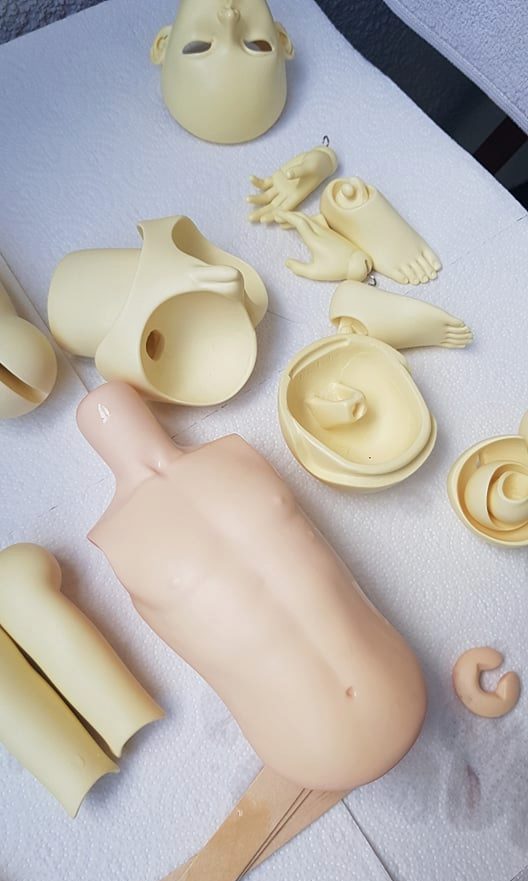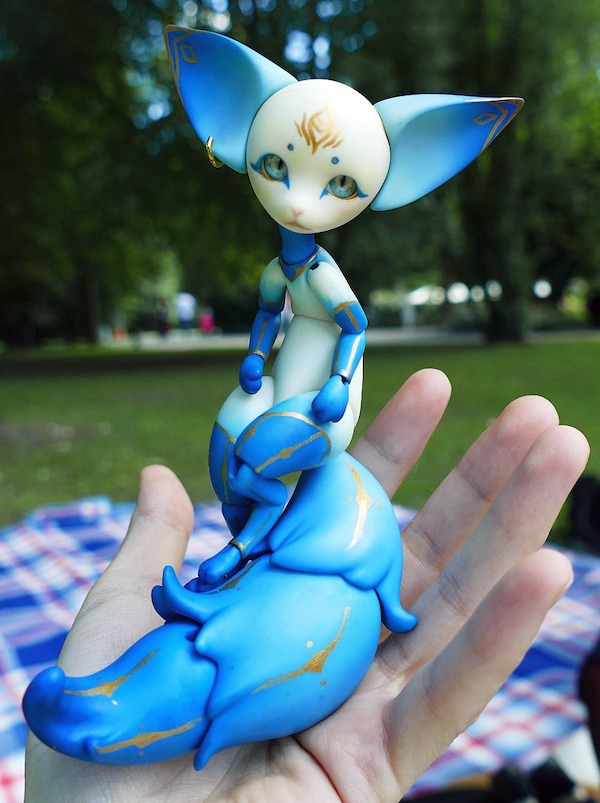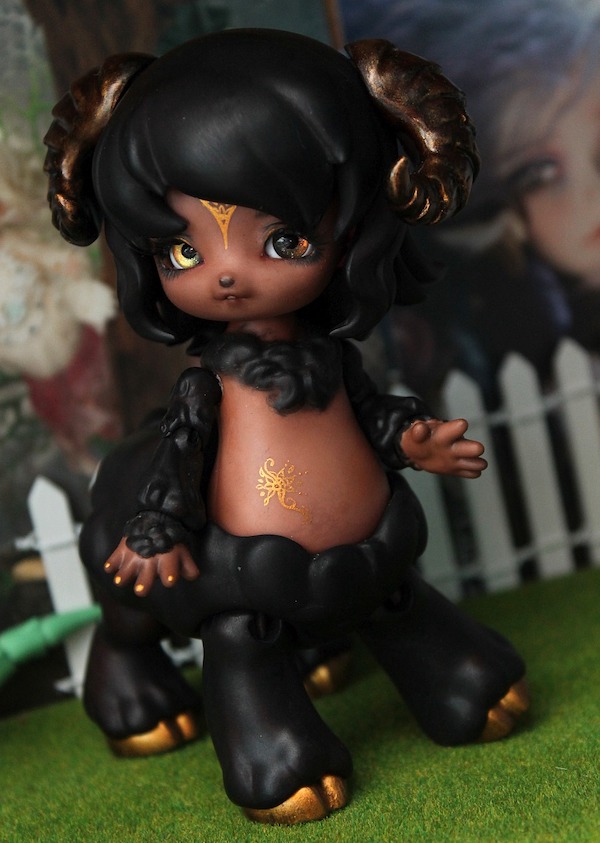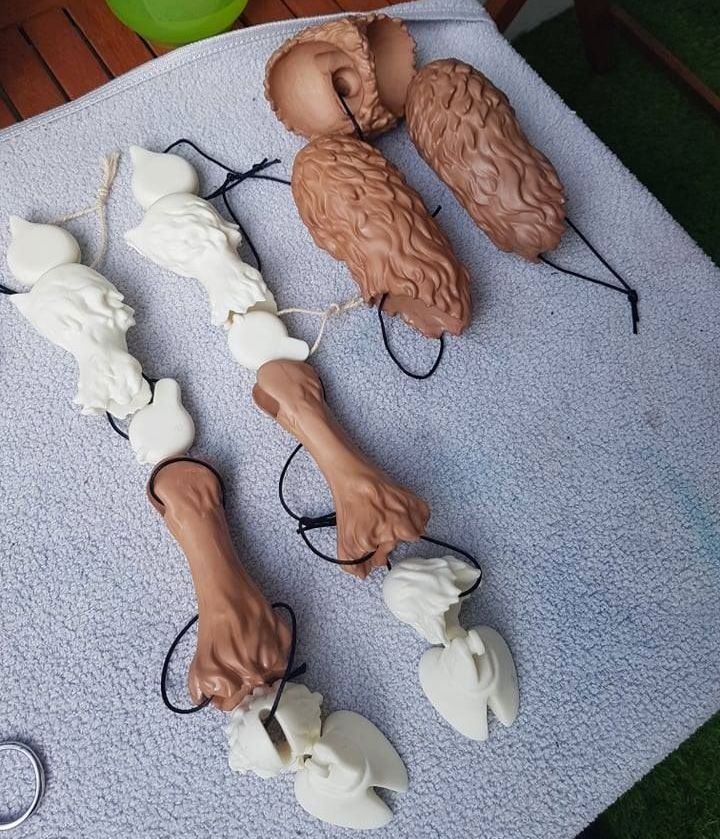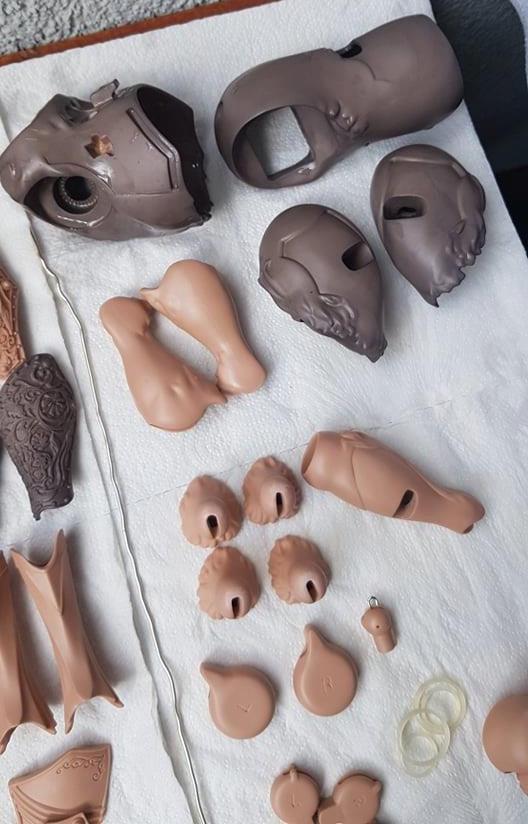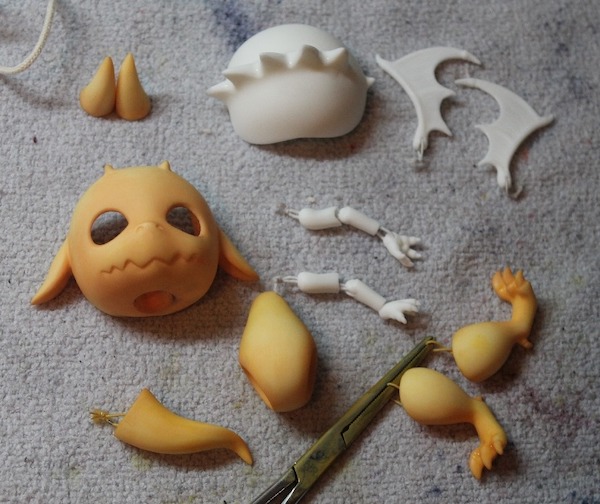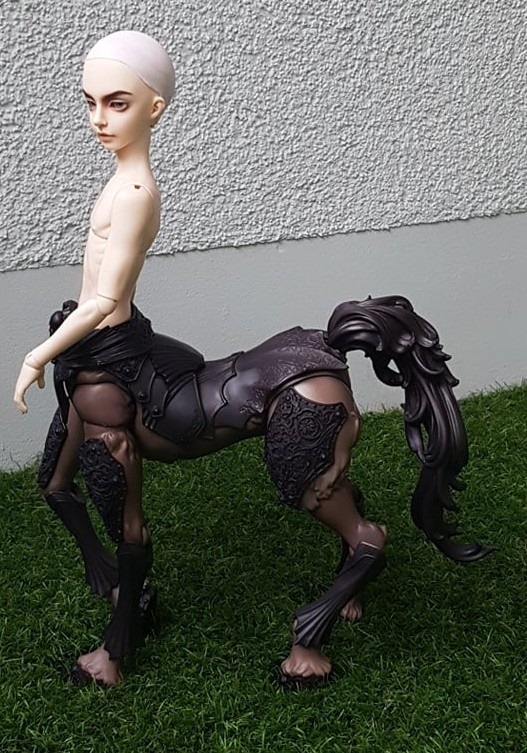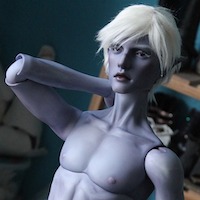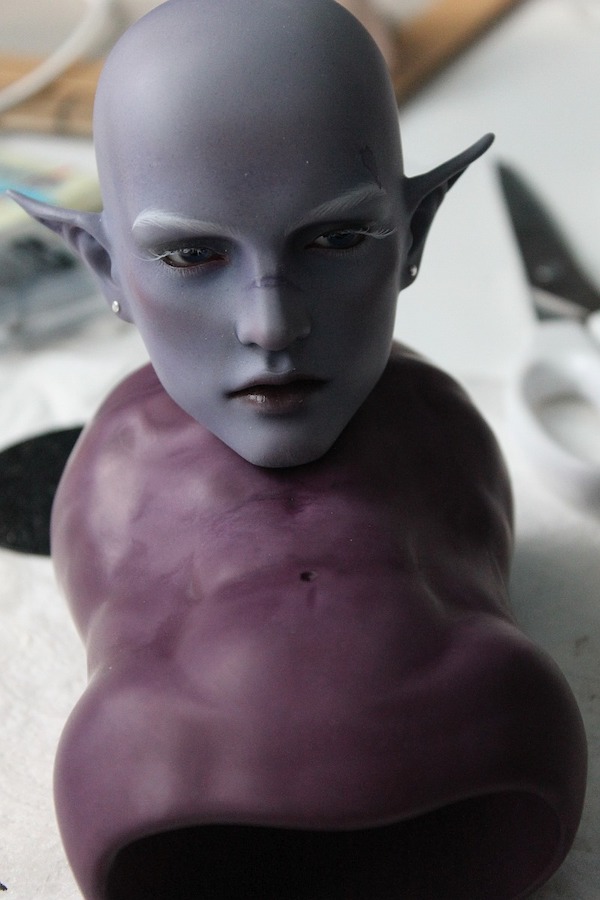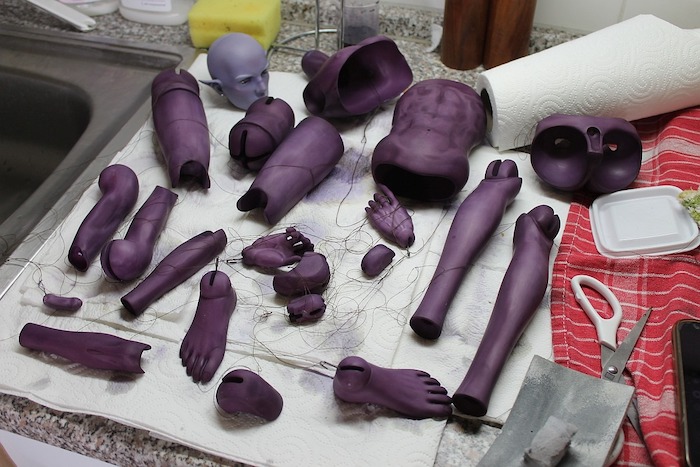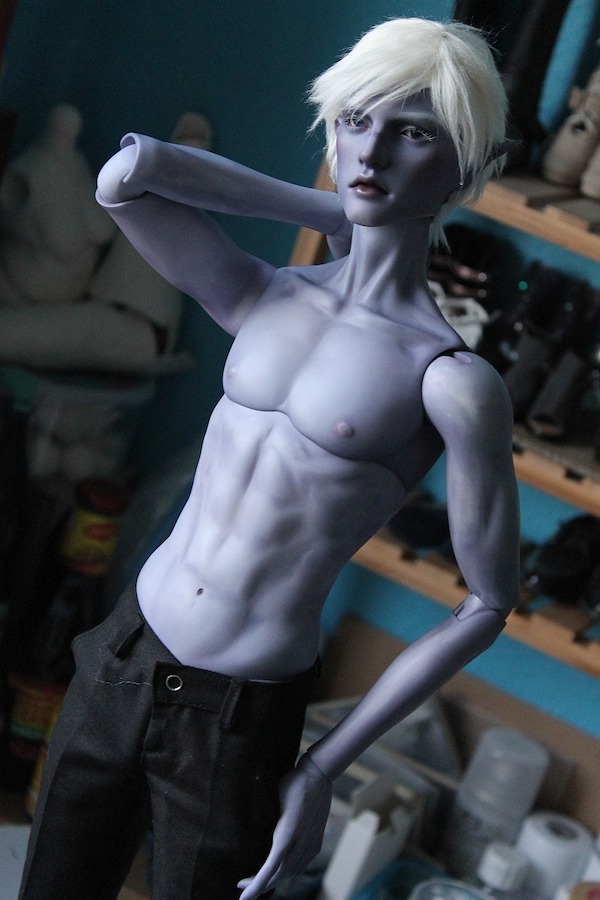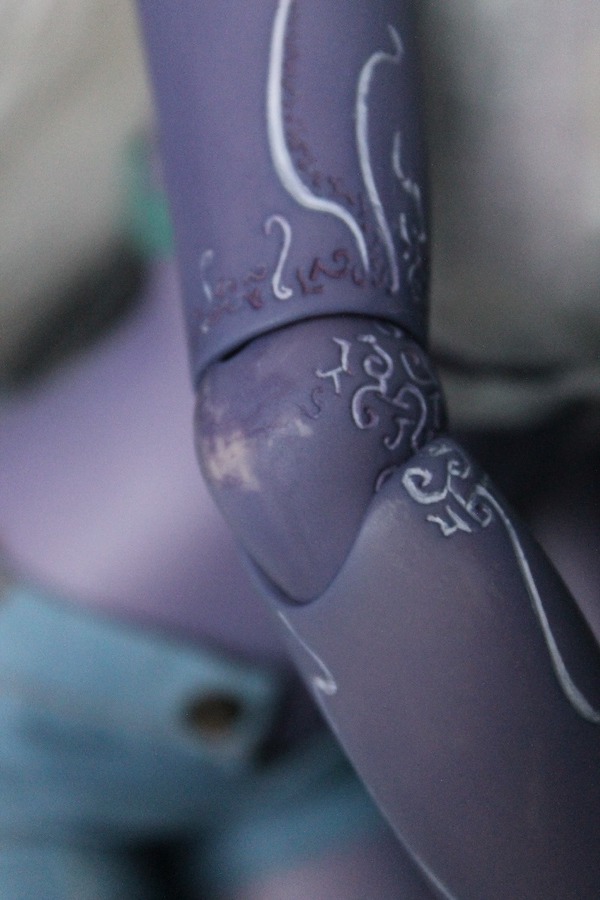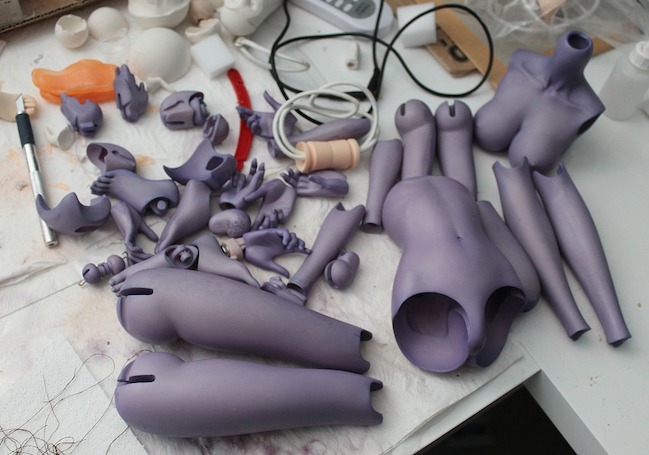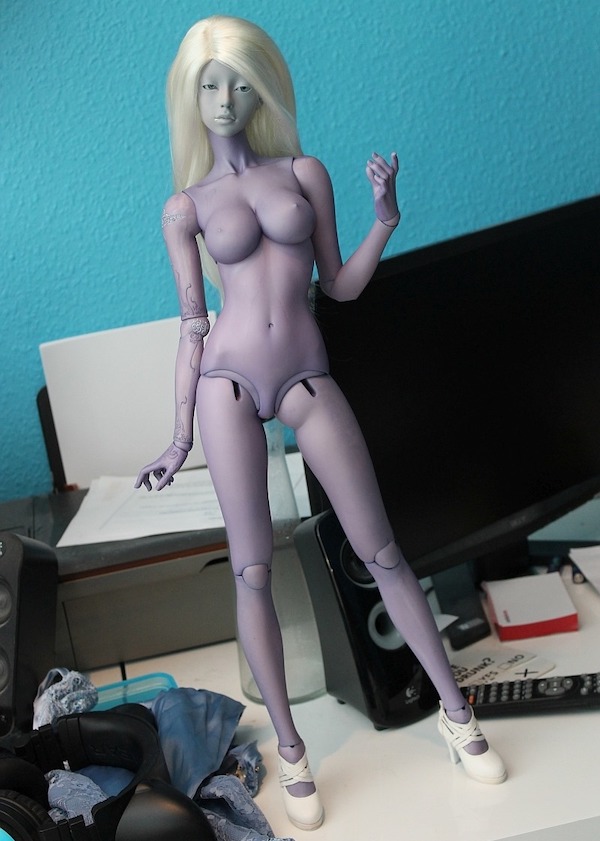Have you ever wondered about whether dyeing resin dolls is worth trying? Meanae from Mea’s BJD Salon answered all my questions about how dyes can be used to transform dolls and accessories.
~~~~~
Q: So how did you first become interested in dyeing your BJD?
A: I’ve always had an original character who was a drow (dark elf) and required dark purple skin. My first try shelling her into a doll was a purple Resinsoul Lian whose color I loved, but the Resinsoul body lacked the detail and realism I like in dolls, so I sold her. I kind of learned about dyeing by chance; at first, it seemed like some kind of miraculous magic – dip your doll in a pot of colored water and voila, it’s purple! I was very skeptical about it at first, but when I got the chance to buy the head I always imagined for that character (a Romantic Soom Migma) and a body I liked (a Fairyland Feeple65), I bit the bullet and dived right into it and did a lot of research about the whole topic. I’d gotten a second doll I also wanted to dye, and he was my first dyeing victim.
Q: So how did your first try turn out?
A: Not really a disaster, but also not really what I was going for. I got his head before his body, and airbrushed the head a nice grey-ish purple shade – dyeing to match is one of the hardest things you can do, and doing that as my first try? Not a good idea. I used iDye Poly but only had purple – the other colors were still in transit to me, but I was really eager to try it.
The whole body got way, way darker and more purple than it should be, but that was absolutely my fault. You need to have a good idea about color theory and how different colors mix with each other, plus an eye for timing when dipping the parts into the pot.
But this mess was actually a great chance to redo it – at first, I tried scrubbing everything off with acetone-free nail polish remover and magic erasers, but that didn’t really help, since the dye is in the resin, and not just on the surface. In the end, I put the parts in small plastic containers, bought 5 bottles of nail polish remover and let them soak each for half an hour. -That- worked wonders.
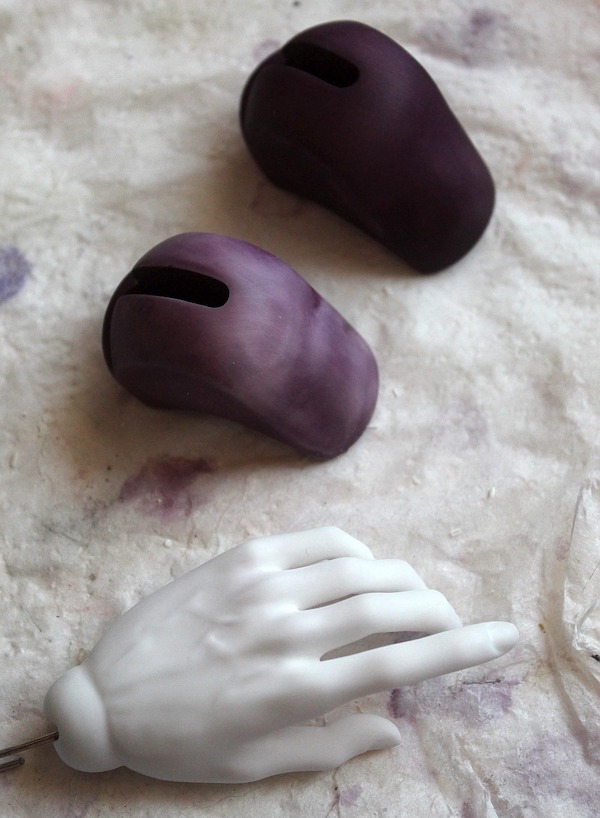
(Top – original dye color; middle – scrubbed with a magic eraser and nail polish remover; bottom – after a 10-minute bath in nail polish remover)
So, after I cleaned him up completely, I did a second try a week or so later. All dyes arrived by then, and this time he came out great.
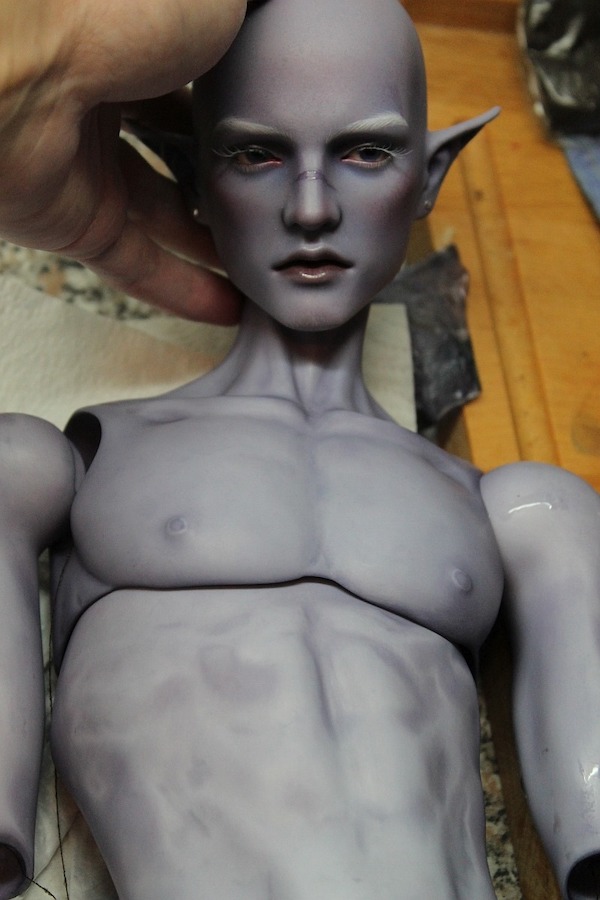
Q: Wow! The final version looks fantastic! So how well does the dye hold up? Does it rub off or fade?
A: The dye fades just like resin fades over time since there’s no UV protector in it. I think his color has greened a little bit over the years – the dye job was done in August 2016, so it’s on him for 3 years now. But, that’s the good thing about dyes – I could just go over it with a very light red dye bath to bring the color back.
The color doesn’t rub off in the joints, at least not on him. On the second doll I dyed, the one who originally got me into dyeing, there are some slight marks where the arm and elbow joint meet.
Q: So when you worked out the problems with your first project, you dyed your girl?
A: The second one was, on one hand, a bit easier, on the other a bit more complicated. Easier, because I hadn’t airbrushed the head before, and more complicated, because she was normal skin instead of white. If you start off with white, you can just add the color you want into the dye bath, but with NS you have to remember that dyes behave like watercolors and that it lies over the NS – so her dye bath was far bluer than his, but the final outcome was rather close.
I had airbrushed her head grey before, but here she is right after dyeing.
Q: So is iDye Poly the go-to dye for recoloring BJDs? How easy is it to work with?
A: I’ve used iDyePoly in the beginning, it worked well, but I wasn’t really happy with it. iDye Poly comes as a powder, and it doesn’t disperse that well in hot water and swims on the surface – so when you dip a part into it, the powder will stick to the resin and will activate because of the heat – resulting in streaks.
You can try siphoning it off with a spoon or filtering it through a coffee filter, but for me that never worked out well. My go-to dye is now Rit Dyemore, which already comes as a liquid and is instantly useable from the bottle. It’s also (like iDye Poly) made for plastics, so it works really well for resin.
Q: What are some of the common problems that crop up when you try to dye resin?
A: One of the most common ones is residue of any sort – like old hot glue sueding, super glue or epoxy. They all have their own problems; dye seeps through sealant but gets easier off of you want to take only the sealant off, hot glue melts in the dye pot and can stick to the resin anywhere else, super glue doesn’t take dye at all and any kind of additive mod takes dyes far stronger than resin.
Another problem is that the thickness of the resin decides how quick it takes on dye. A hand, for example, will take dyes way quicker than a bust piece. Then there are cases where the same pieces (like two upper legs) come out differently colored, even though you put them in the pot at the same time – then you have to put one back and try to match them. Dyes also tend to change their color a bit when they’re drying – I’ve noticed that they mostly look warmer when they come directly out of the pot and ‘cool down’ when they dry. Which makes matching a body to a head an incredibly hard thing to do, especially if you’re going for a very specific tan skin.
Another, albeit smaller problem when dyeing can be a similar phenomenon as with iDye – the residue on the water surface. I’ve noticed that especially with very dark colors like dark blue or straight black there tends to be a kind of film on the water surface, which clings to resin similar to iDyes powder. But! That’s easily solvable (literally) with a few drops of detergent. The detergent will change the water’s surface tension, so the film dissolves into the water.
Q: Is there any mold release used in casting that stays on the surface like in vinyl casts?
A: If companies use mold releases, they’re cleaning up each part thoroughly – I’ve never had any problems with dyeing dolls out of the box.
Q: Have you dyed many dolls after your first 2 projects? If so, have any been commissions?
A: So far I think I’ve dyed… around 20 dolls I think? maybe a bit more. I still got 10 of them, including the first two I did. Real commissions were 4 – two very old Luts Els who I de-yellowed, a Souldoll Vito girl who got pink gradients on her joints and some Fairyland Altis Faun legs that went from white to tan.
Q: Is it easier to dye lighter colors over dark ones?
A: It depends. Lighter colors go quicker, yes, but they also can go too dark very quick. Darker colors give a bit more time to correct any mismatching parts.
Q: So far we discussed some of the difficulties, but what are the positives of a dye project?
A: Positives! Number one of course – it’s semi-permanent. It holds better than any painted/airbrushed colors, even in joints, and can hold up over years. Even if it does fade, you can just dye over it. Number two – it’s removable. I’ve heard from a lot of people that they would never try dyeing because it will ‘ruin’ a doll permanently, which is, simply spoken, not true. Dyes are removable even to a point where you can’t even see the doll was ever dyed – even in hard to access areas like between fingers.
Number three – gradients, my personal favourite.
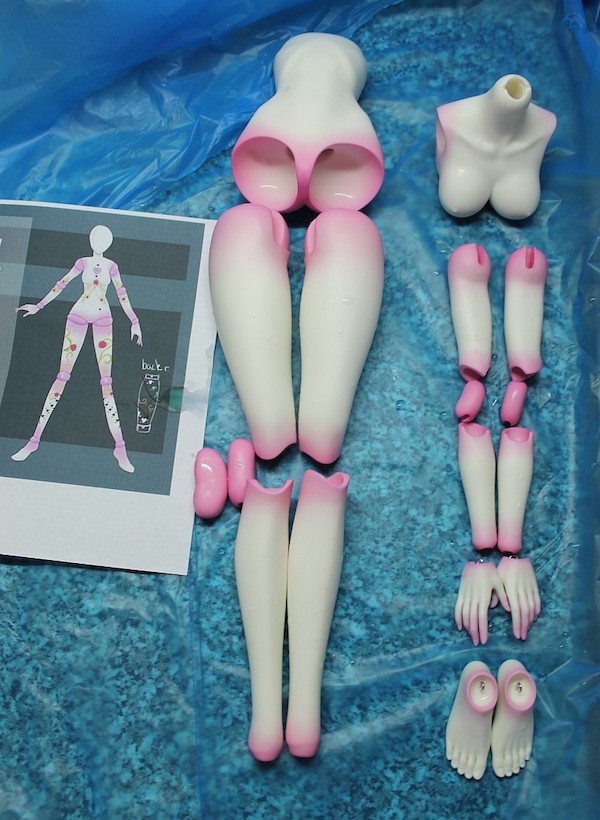
There are a lot of things you need to take care of when dyeing, or at least have in mind. But if you inform yourself beforehand its a really fun and unique way to customizing dolls.
Q: I love the gradient! So for a gradient, you dip the parts into the dye and hold them or would you suspend them somehow?
A: Yes, dipping them and moving them around a bit, so the gradient gets a bit more room to fade out. If you’d hold a piece in place and not move it, you’d get a rather straight line where the water ends.
Q: Where is the best sources to learn more about dyeing BJDs?
A: Facebook, I think. There’s a group called ‘BJD Dyeing’ where people can just ask anything related to dyeing, and there are a lot of people who’re always willing to help:
https://www.facebook.com/groups/bjddyeing/
So far it’s a lot of picking information together from different sources. There are a few posts on Youtube and Tumblr from doll owners who’ve dyed their dolls, but there isn’t really a guide or a “do’s and don’ts for doll dyeing”
Q: Well thank you so much for all of this information! Is there anything else you want to add?
A: Dyeing isn’t rocket science. Always remember, if you have questions, just ask! There are a lot of people who would love to help.
A previous article on Mea’s doll face-ups and customizing may be found HERE
